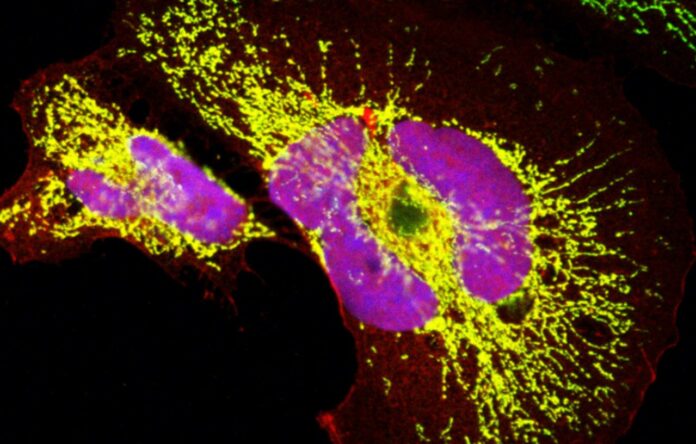Small structures can sometimes have a big impact
It is a well-known fact among biologists that small structures can have a significant impact. Countless signaling molecules, hormones, and other biomolecules are actively present in our cells and tissues, leading and influencing the essential processes occurring in our bodies.
Despite being aware of this fact, biologists and physicians paid little attention to a specific protein class. They believed these proteins to be trivial and non-functional since they were exclusive to primates and incredibly tiny.
A few years ago, Professor Norbert Hübner at the Max Delbrück Center and Dr. Sebastiaan van Heesch at the Princess Máxima Center for Pediatric Oncology in the Netherlands changed this perspective.
“We were the first to prove,” points out Hübner, “the existence of thousands of new microproteins in human organs.”
A group lead by Hübner and van Heesch detail their methodical investigation of these miniproteins and their findings in a recent study published in Molecular Cell: As one of the paper’s three primary authors who also works at the Max Delbrück Institute and the German Center for Cardiovascular Research, Dr. Jorge Ruiz-Orera says, “we were able to show which genome sequences the proteins are encoded in, and when DNA mutations occurred in their evolution.”
According to Ruiz-Orera’s bioinformatic gene analysis, it was discovered that the majority of human microproteins were formed many years later in the evolution process compared to the larger proteins that are already known to the scientific world.
But, the huge age difference doesn’t seem to stop the proteins from “talking” to one another.
These “lab experiments showed that the young and old proteins can bind to each other – and in doing so possibly influence each other,” adds lead author Dr. Jana Schulz.
So, she thinks that, contrary to what has been thought for a long time, the microproteins are important for a number of cellular functions.
Due to their relatively quick “innovations and adaptations,” the young proteins may also play a significant role in evolutionary development.
Van Heesch asserts “it’s possible that evolution is more dynamic than previously thought.
Proteins unique to humans
Researchers were shocked to learn that much younger microproteins may interact with older ones.
A biotechnical screening method, invented at the Max Delbrück Center in 2017, was employed to conduct experiments leading to this observation.
Together with Dr. Philipp Mertins and the Proteomics Platform, which is run by the Max Delbrück Center and the Berlin Institute of Health at Charité (BIH), the miniproteins were made on a membrane and then put in a solution with most of the proteins known to exist in a human cell.
After that, the researchers were able to identify specific binding partners via the use of sophisticated experimental techniques and computer-aided analysis.
“If a microprotein binds to another protein,” explains Schulz, “it doesn’t necessarily mean that it will influence the workings of the other protein or the processes that the protein is involved in.”
The fact that the proteins may bind does, however, imply that they can affect one another’s functionality. This notion is supported by preliminary cellular tests carried out at the Max Delbrück Institute in collaboration with Professors Michael Gotthardt and Thomas Willnow.
Since some of the ancient proteins were present in the earliest forms of life, Ruiz-Orera hypothesizes that the microproteins may impact “cellular processes that are millions of years older than they are.”
Most microproteins, as opposed to the well-established proteins already encoded in our genome, “emerged out of nowhere,” as Ruiz-Orera puts it, “out of DNA regions that weren’t previously tasked with producing proteins.” Hence, microproteins did not follow the “conventional” and far simpler path of becoming copies and derivatives of already existing proteins.
Also, since these tiny proteins are a recent development in the evolution of humans, they are absent from the cells of the majority of other species, including mice, fish, and birds.
Yet, these organisms have been revealed to contain their own library of novel, tiny proteins.
Smallest proteins known
The third main author of the paper, Dr. Clara Sandmann, notes that the team also uncovered the smallest human proteins to date: “We found over 200 super-small proteins, all of which are smaller than 16 amino acids.”
Proteins are constructed entirely of amino acids. This has led to the question of the minimum size a protein could be, or more importantly, how large it should be to execute its functions. Typically, a protein consists of multiple hundred amino acids.
Scientists were previously familiar with peptides, which are small proteins that operate as hormones or signal molecules. They develop as a result of their separation from bigger precursor proteins.
The findings of this study show those “peptides of a similar size can develop in a different way,” according to Sandmann.
These smallest of the small proteins can also bind to larger proteins in a very specific way, but it’s still not clear if they can turn into hormones or something similar:
“We don’t yet know what most of these microproteins do in our body.”
Still, the study gives a hint of what the molecules can do: “These initial findings open up numerous new research opportunities,” according to van Heesch
Researchers can’t keep ignoring the microproteins because it’s clear that they are too important.
The biomolecular and medical research groups, according to Van Heesch, are quite excited about these fresh discoveries.
There is a possibility that “these microproteins are involved in cardiovascular disease and cancer, and could therefore be used as new targets for diagnostics and therapies,” according to Hübner.
Several US biotech firms are already investigating this area. And the team responsible for the present article has ambitious plans: Their research examined 281 microproteins, but they want to extend their tests to include many more of the 7,000 microproteins recently catalogued, in the hope that this would disclose more unexplored roles.
Source: 10.1016/j.molcel.2023.01.023
Image Credit: Clara Sandmann, Max Delbrück Center
